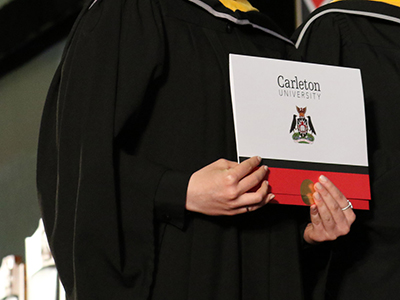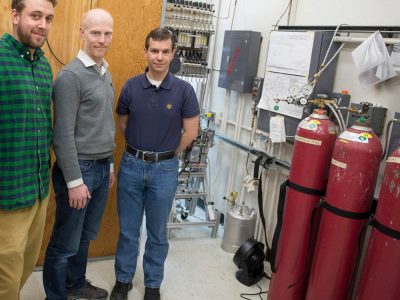By Elizabeth Murphy
Photos by Chris Roussakis
Could glowing salamanders hold the key to long-standing evolutionary questions?
Carleton University Prof. Hillary Maddin in the Department of Earth Sciences wants to find out. Maddin recently acquired four pairs of axolotls, an aquatic salamander species, to assist in research on the evolutionary changes of skull development from the prehistoric era to today.

Prof. Hillary Maddin in her lab
Maddin works in the field of vertebrate paleontology, which studies the evolution of vertebrates from dinosaurs to birds to modern-day humans. Through her research, Maddin noticed there are a lot of aspects regarding the development of the skull that science doesn’t yet fully understand from an evolutionary perspective. The construction and patterns of skull development through time can help explain today’s variety of animal life.
“For a paleontologist, the skull is like the Holy Grail of the animal,” explains Maddin.
“It gives us the most information typically about who it is, what it is and what it might even be doing.”

Piecing Together Genetic Patterns
In order to piece together the genetic patterns that may have led to evolutionary changes, Maddin takes an innovative approach: combining paleontology and biology to examine the development of amphibian skulls and compare them to the fossil record of their prehistoric counterparts.
Cue the newly-arrived axolotls, four of them genetically modified with green fluorescent proteins.
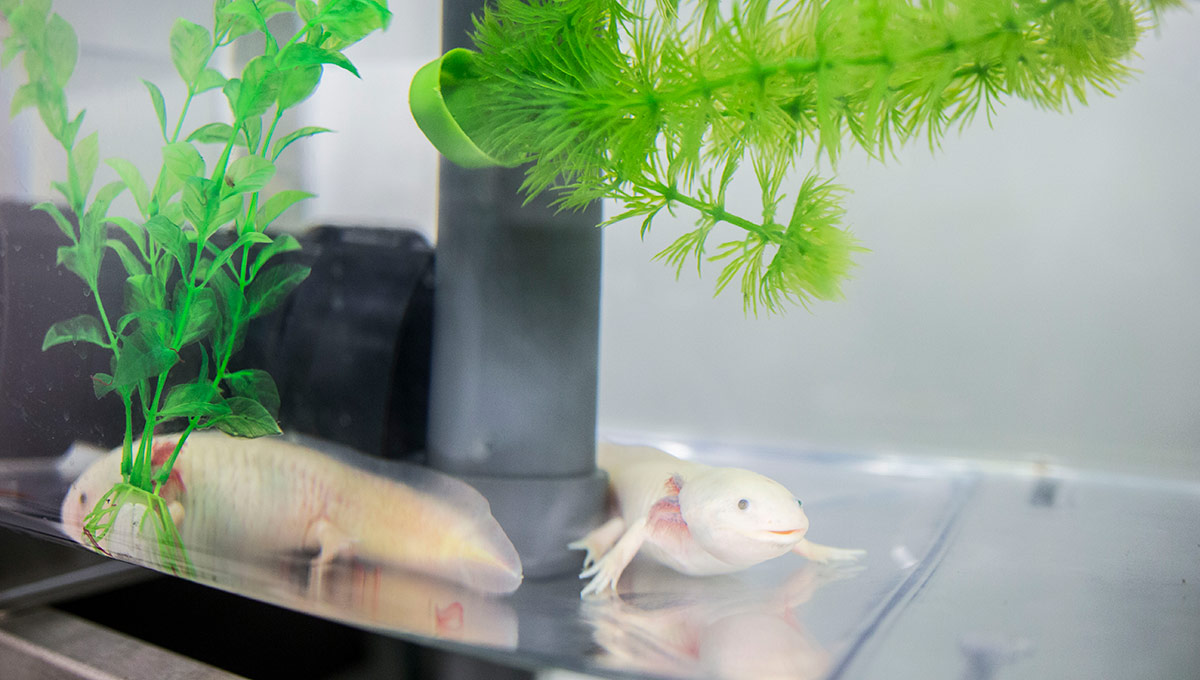
Genetically modified axolotls
While the axolotls appear to have beige-white skin and pink gills while in their tanks, they cast a green glow when placed under ultra-violet light. That cellular property will assist Maddin in tracking what part of the axolotl is responsible for skull development and shine a light on the evolutionary morphology of their ancient amphibian ancestors. As part of that research, her lab is looking at differences in the formation of skull and vertebral segments, and identifying genetic patterns responsible for the construction of the skull.
“Now we know if we manipulate one particular gene we can actually see a segment, via that green fluorescent protein landmark, changing its morphology – changing its fate,” says Maddin.
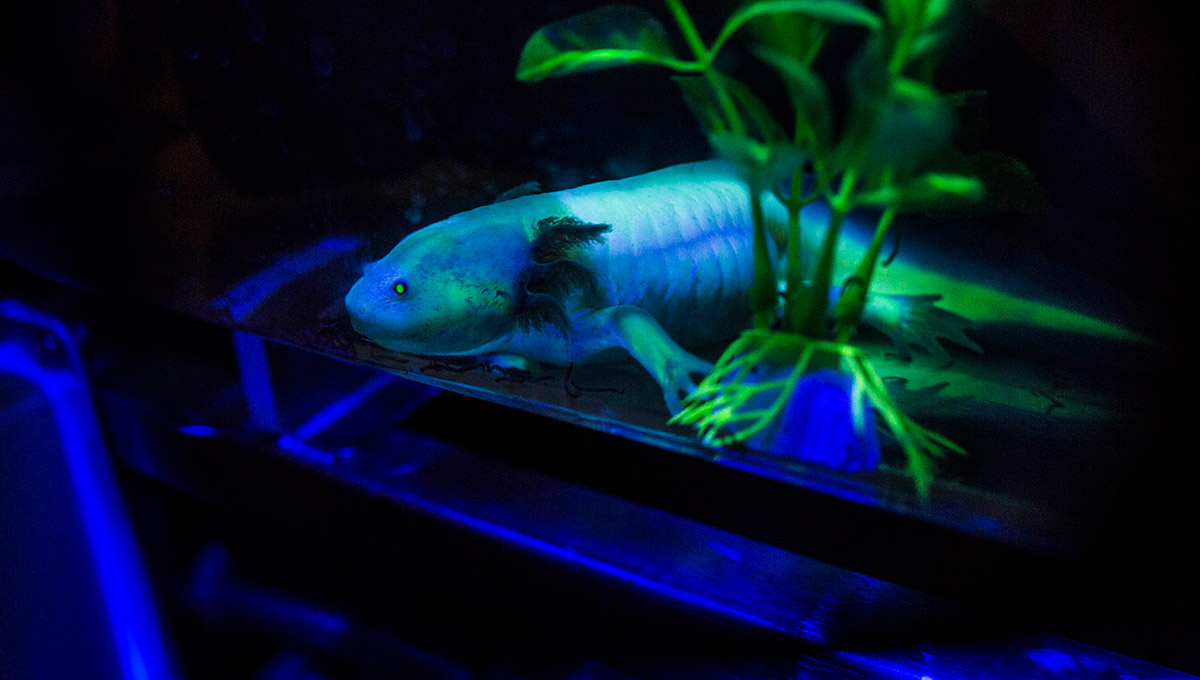
Glowing Salamanders Can Shed
Light on Evolutionary Changes
By observing these changes, Maddin can investigate specific gene function. By understanding this, researchers may be able to piece together patterns on how evolutionary changes could have taken place eons ago. Today’s salamanders bear a resemblance to the ones that walked the earth 300 million years ago, allowing the axolotls to be genetic stand-ins for evolutionary studies.
This information could be used to enhance our understanding of why skulls of different species with shared prehistoric ancestors evolved in different ways, from salamanders to chickens to mice.
“We are going back and rewriting 100-year-old stories about where the skull comes from and how it has changed through time,” says Maddin.
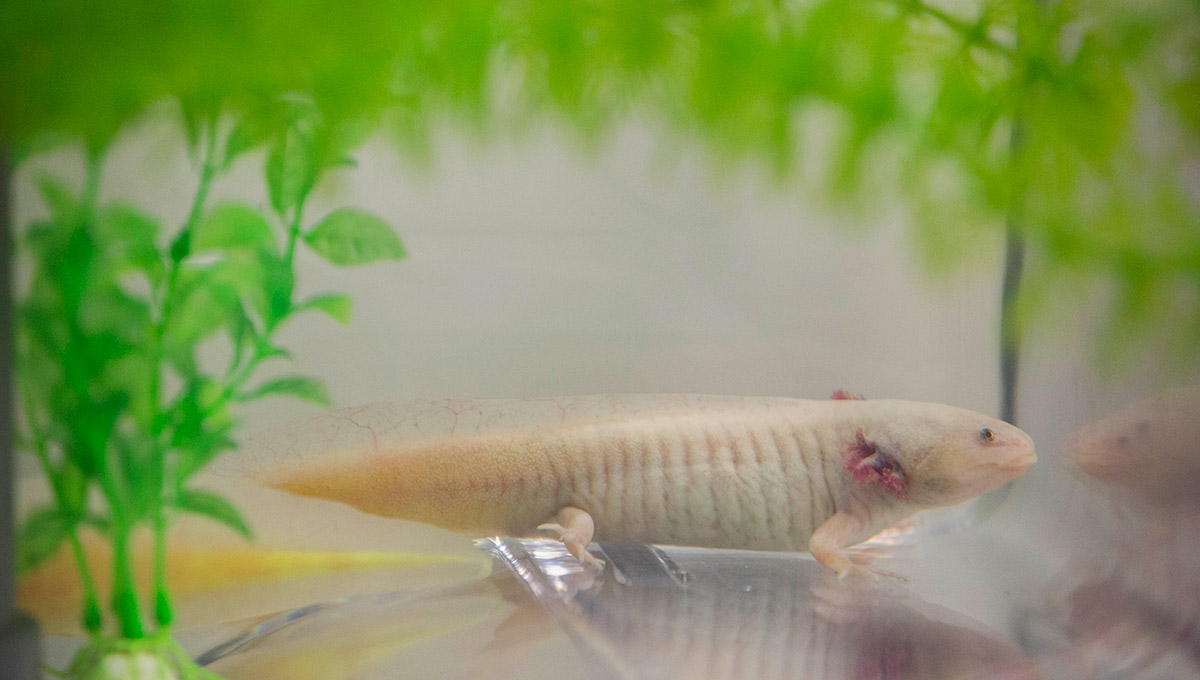
Numerous students are involved in axolotl research at Maddin’s In Vivo Fluorescence Microscopy lab – from PhD and master’s students to undergrads working on honours theses and students assisting in caretaking duties of the axolotls. Funding for the lab and its operations comes from the Canadian Foundation for Innovation and the Natural Sciences and Engineering Research Council of Canada.
The innovative approach of combining vertebrate paleontology and biology is poised to help scientists learn more about evolutionary patterns. As Maddin notes, with the addition of the axolotls, it is a complementary research pairing.
“They are reciprocally illuminating: the fossils tell us more about the life of animals and they are telling us more about the fossils.”
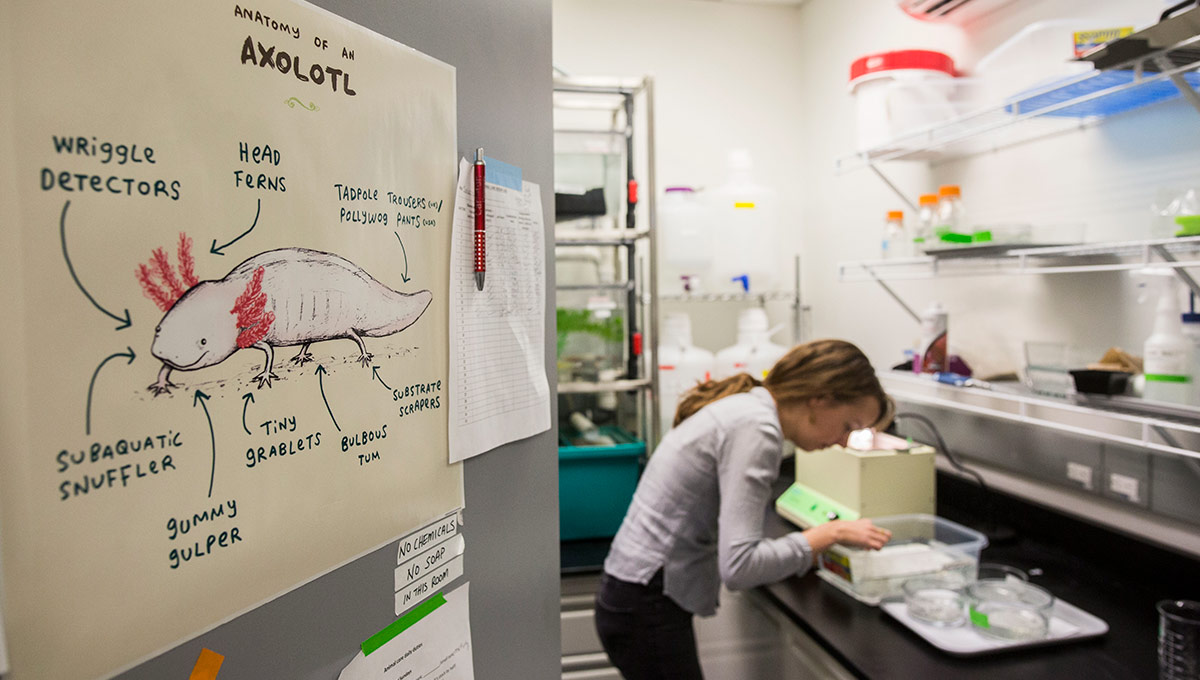
Tuesday, January 23, 2018 in Faculty of Science, Research
Share: Twitter, Facebook


